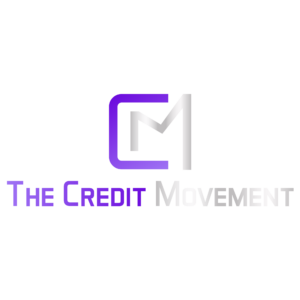Have you been struggling to boost your credit score?
Use This Trick to Boost Your Credit Score Today!
Revolving Debt (mainly Credit Cards, but also Home Equity Lines of Credit) account for 30% of your overall credit score. Given the scale for most score calculations, or algorithms, is 300-850 — a 550 point scale — 30% accounts for 165 points of your overall credit score. The amount of these 165 points that you are awarded is based entirely on your balance-to-limit ratio on each individual card. Ideally, you want to have each individual cards balance below 30% of the limit. For instance, if you have a credit card with a $1000 limit, you would want to keep the balance below $300 in order for that card to not be negatively impacting your credit score. Above 30% you begin to lose points. Once you are above 50% utilized you lose some more. Above 70%, more. And above 90% you are losing the full potential of that card.
Credit Cards Account for 30% of Your Score
What is the full potential of the card?
That depends on how many individual cards you have. If you have 3 cards, each card is in control of 10% of the score — or 55 points. (165 points total divided by 3 cards). Remember, this section of the score factors in balance-to-limit ratio on individual cards. Lets say you have 3 credit cards and each has a $1000 limit. 2 of the cards have a $0 balance, and the other has a $900 balance. What should you do?
You have several options in this scenario. You could pay the $900 balance card down to under $300 to get under 30% utilized. Or, perhaps you have great payment history on that card and you could raise the limit from $1000 to $3000. Now you have a $900 balance on a $3000 limit card. Viola!!! You are under 30%. What if paying the cards down and/or raising the limit are not options available to you — you could balance transfer $300 onto each of the $0 balance cards that you have —- now you have 3 cards and all of them are at a $300 balance. 30% or less.
Managing your balance-to-limit ratios on cards is NOT only about paying them down. As you can see, you have several options to optimize your score using balance transfers or raising limits.
We have consulted hundreds of thousands on how to properly manage and optimize their credit.
One particular client was attempting to purchase a home and after reviewing the credit file, the mortgage lender was offering a particularly high interest rate based on the client’s credit score of 631. At a 680+ credit score the client stood to save roughly $300 monthly on their mortgage payment. After careful review of the credit report and options available, we advised the client to balance transfer from one card to several others. The numbers were similar to the ones mentioned in the balance transfer example above.
The client initially refused The reason? The interest rate on the card with the balance was on an introductory rate of 7% while the others were at 22.9%. Smart? No! The finance charge (interest charge) for putting $300 onto a 22.9% card was approximately $5.50. $5.50!!! The client stood to save $300 monthly on their mortgage over 30 years! That is $108,000!!! Of after tax dollars so it is actually more like $160,000. Out of principal they didn’t want to pay the $5.50 in interest charges — after explaining the $160,000 savings on their mortgage, they promptly did the balance transfer.
Each credit situation is unique, as is the individual’s goal — to generally clean things up, get out of debt, buy a home, purchase a vehicle, etc. It is important to understand your goal and how it ties to your unique credit situation.
Building positive, open, active credit!
Many folks are hyper-focused on the derogatory items they have on their reports. The negative stuff is approximately 35% of your score (45% if you factor in inquiries). The other 55%-65% is how you are managing your positive, open, active credit — how long you have had credit established, the balance of types of accounts that you have, and how you are managing your revolving debt as previously discussed.
There are many ways to build positive credit.
You can boost your credit score easily!
Many folks are familiar with credit building options such as secured credit cards, SELF Lender (essentially a savings account that reports to the credit bureaus), etc.
What some people may not realize is the power of piggybacking on someone else’s credit. Otherwise known as the authorized user trick. You can be added to a friend, neighbor, or relatives credit card and inherit all of their credit history on that card. There are a few rules to understand before being added to someone’s credit card:
1) Be sure the card has been open 2 years or more
2) Make sure there are NO late payments in the card’s history
3) The card’s balance-to-limit ratio should be under 30% (see above for explanation)
Contrary to what many think, there is no risk to the person adding another individual to their credit card. Your negative credit can never impact the credit score of the person that added you. That being said, you as the person being added could be damaged if the person adding you goes over 30% of the limit or makes a late payment. This is a powerful trick that we have seen help people as much as 120 points in their credit score. But choose wisely!
Boost your credit score today!
As Always… In case you haven’t yet, here’s how you get started.
Step 1:
Tap or click here to get your $1 credit report.
We’ll need it to do your credit analysis.
Note:
This is for a $1 seven day trial.
You can cancel it in the first seven days if you want, but we need this as a first step, in order to help you.
Step 2:
You will get a login and password for IdentityIQ, when you set up your $1 trial.
Go to this page on TheCreditMovement.com.
Share your username/password for IdentityIQ in the form on the page.
We are here to help you buy a home. We will introduce you to a lender once you will qualify for the loan you want.






















